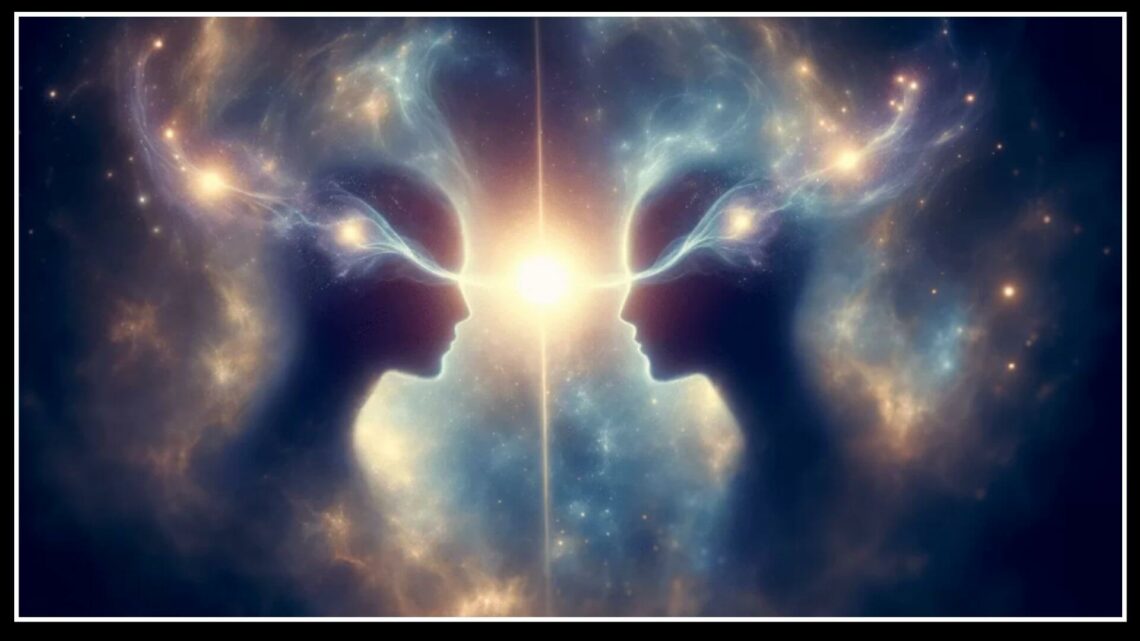
Telepathic Communication and Unity
It has been documented that communication during an Actual Death Experience involves the transmission of telepathic thoughts rather than the conventional use of spoken words.
Telepathic communication may explain why many people who undergo an Actual Death Experience describe a sensation of interconnectedness with those present around them. Following their recovery, numerous individuals claim to have experienced an enhanced level of consciousness, almost as if they have attuned themselves to the universe.
Is Telepathic Communication Scientifically Proven?
Scientific Theories:
Various experiments have been conducted to showcase telepathy; however, there is a lack of empirical evidence to support its existence. The United States National Research Council assembled a committee to investigate paranormal assertions, and their findings indicated that, despite over a century of scientific inquiry into these topics, there is no scientific basis for phenomena like extrasensory perception, telepathy, or exercises related to ‘mind over matter.’ An assessment of a significant body of the best available evidence it was determined that there is no substantial support for the existence of these phenomena.
The field of parapsychology is the study of mental phenomena. The scientific community considers parapsychology a pseudoscience, (a collection of beliefs or practices mistakenly regarded as being based on scientific method). To date, there is no known mechanism for telepathy.
Philosopher and physicist Mario Bunge has written that telepathy would contradict laws of science and the claim that “signals can be transmitted across space without fading with distance is inconsistent with physics”. Physicist John Taylor has written that the experiments that parapsychologists have claimed to support evidence for the existence of telepathy are based on the use of shaky statistical analysis and poor design and attempts to duplicate such experiments by the scientific community have failed. Taylor also wrote the arguments used by parapsychologists for the feasibility of such phenomena are based on distortions of theoretical physics as well as “complete ignorance” of relevant areas of physics.
Psychologist Stuart Sutherland wrote that cases of telepathy can be explained by people underestimating the probability of coincidences. According to Sutherland, “Most stories about this phenomenon concern people close to one another—husband and wife or brother and sister. Since such people have much in common, probably, they will sometimes think the same thought at the same time.”
Graham Reed, a specialist in anomalistic psychology, noted that experiments into telepathy often involve the subject relaxing and reporting the ‘messages’ to consist of coloured geometric shapes. Reed wrote that these are a common type of hypnagogic image and not evidence for telepathic communication.
Psychiatry:
The concept of telepathy bears a resemblance to three clinical concepts, namely delusions of thought insertion/removal and thought broadcasting. This similarity could potentially shed light on how individuals may perceive themselves as experiencing telepathy. Thought insertion/removal is a symptom commonly associated with psychosis, particularly in cases of schizophrenia, schizoaffective disorder, or substance-induced psychosis. Patients with this symptom falsely believe that certain thoughts are not their own, attributing them instead to external sources such as other individuals, extraterrestrial beings, supernatural entities, intelligence agencies, or even artificial intelligence. Conversely, some patients may feel as though their thoughts are being extracted or erased from their minds.
Schizophrenic individuals experiencing thought broadcasting, a type of alleged telepathy, hold the belief that their private thoughts are being transmitted to others without their permission. In addition to other psychotic symptoms, delusions of thought insertion can be alleviated through the use of antipsychotic drugs. Mental health professionals, including psychiatrists and clinical psychologists, think that individuals with schizophrenia and schizotypal personality disorder are more prone to endorsing beliefs in telepathy, a notion supported by empirical findings.
Is Telepathic Communication an Aspect of Human Consciousness?
“I was constantly aware of a voice speaking directly to me, a voice that no one else could hear. This experience was utterly horrifying and undoubtedly one of the most terrifying ordeals I have ever endured. The most distressing aspect was that the voice seemed to be incessant, never ceasing. It persisted constantly, without respite.
Some days, it appeared to be more active and forceful than others. On days when it felt like I had an erupting volcano inside my head-a river of fire spewing out and burning my brain, the pitch frequency of the voice increased. I would find myself sitting motionless, my head burning, my eyes partially closed due to my inability to tolerate any artificial light or even the natural daylight filtering through the windows, even on overcast days. The voice sounded so foreign, so entirely distinct from my own thoughts, that when it initially began, I genuinely believed that I had suddenly acquired psychic abilities and had become clairvoyant, and that this voice was a spiritual entity attempting to communicate with me.
After enduring months of excruciating suffering, I gradually comprehended that the voice I was experiencing was not a spiritual entity endeavouring to establish communication with me. In actuality, it was my own cognitive processes at work. The unfamiliar semblance was a result of its unusually high frequency pitch, which had previously eluded my recognition as part of my typical thought process. In essence, I was simply communicating with myself but from a more evolved and heightened level of consciousness.”
Beverley Gilmour
Hypothesis:
When we understand Human Consciousness we will gain a greater insight into various mental disorders, including psychosis, schizophrenia, and neurodegenerative conditions like dementia.



